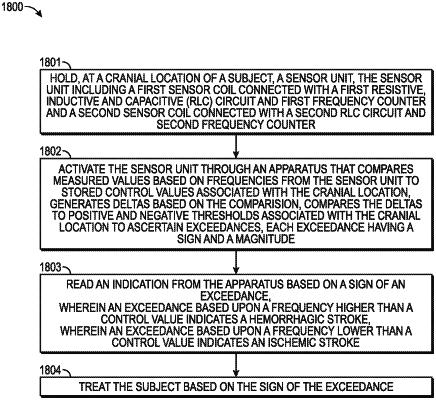| CPC A61B 5/245 (2021.01) [A61B 5/067 (2013.01); A61B 5/4839 (2013.01); A61B 5/6803 (2013.01); A61B 5/684 (2013.01); A61B 5/7246 (2013.01); A61B 2562/0223 (2013.01)] | 19 Claims |

|
1. A method of diagnosing an issue in a subject's brain, the method comprising:
holding, at a cranial location of a subject, a sensor unit, the sensor unit including a first sensor coil connected with a first resistive, inductive, and capacitive (RLC) circuit and first frequency counter and a second sensor coil connected with a second RLC circuit and second frequency counter;
activating the sensor unit through an apparatus that compares measured values based on frequencies from the sensor unit to stored control values associated with the cranial location, generates deltas based on the comparison, and compares the deltas to positive and negative thresholds associated with the cranial location to ascertain exceedances, each exceedance having a sign and a magnitude;
reading an indication from the apparatus based on a sign of an exceedance; and
treating the subject based on the exceedance.
|